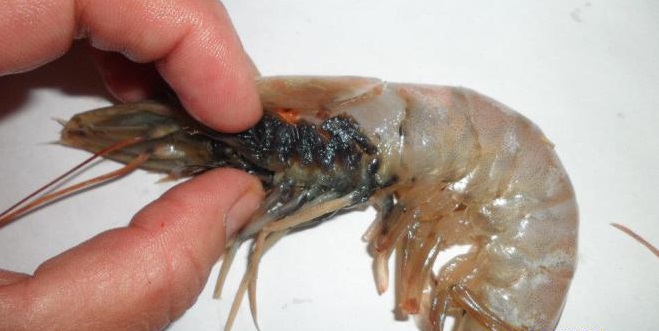
Shrimp is a surprisingly efficient health food. They are incredibly low in fat and incredibly high in protein, with around 75 grams of protein for every 1 gram of fat. They are also rich in vitamin D, B12 and Omega 3 fatty-acids, which provide the body with numerous health benefits.
Although natural, untainted shrimp is an amazing health food, the same cannot be said for a lot of the shrimp being sold in the United States. This is mainly due to the way they are harvested and the foods they are raised on.
Asian Seafood Farming
Vietnam is one of the largest importers of shrimp to the United States, shipping around 100 million pounds of shrimp a year, making up almost 8% of all shrimp consumed by Americans.
The demand for shrimp in the United States has increased immensely in the last few decades. This has led to an increased competition in the shrimp and seafood market, and ultimately led to many shrimp farmers having to cut corners in the health and safety department to keep up with competitors.
One investigation found that some Vietnamese shrimp farmers freeze their shrimp that is ready for exporting to the U.S. in water that isn’t even considered safe for drinking.
According to microbiologist Mansour Samadpour, who specializes in testing water used for shellfish farming, the use of this water contributes to the spread of harmful bacteria and diseases.
“Those conditions — ice made from dirty water, animals near the farms, pigs — are unacceptable,” Samadpour says.
Shrimp isn’t the only food that is raised on shady health regulations in Asia, however. One tilapia farm in Yangjiang, China supplements its fish-feed with feces from pigs and geese. According to Michael Doyle, director of the University of Georgia’s Center for Food Safety, this results directly in the growth of many well-known bacterial disease.
“The manure the Chinese use to feed fish is frequently contaminated with microbes like salmonella,” Doyle says.
How To Avoid Harmful Seafood
It may seem ironic that the two main reasons farmed seafood is bad for us is because they contain high levels of both antibiotics and bacteria. However, it’s not surprising when you consider the conditions that these animals are raised in.
Aside from being fed bacteria-laden animal feces, they are also crammed into tight spaces their entire lives, greatly contributing to the spread of disease throughout the population.
According to the study, 60% of 342 samples of frozen shrimp contained either salmonella, vibrio, listeria or e.coli. Along with testing positive for these diseases, they also had traces of oxytetracycline, enrofloxacin, and sulfa antibiotics.
94% of all shrimp imported to the U.S. comes from Asian countries such as Thailand, Vietnam, Indonesia and India. The crowded and polluted conditions of shrimp farming in these countries generally leads to the spread of disease and overuse of antibiotics to try and combat this disease.
According to the study conducted by Consumer Report, raw, wild-caught shrimp from the United States and Argentina had the lowest bacteria levels of all samples they tested.
So, if you want to try and avoid harmful bacteria and antibiotics in your seafood as much as possible, by local, wild-caught fish and shellfish. Even though it may be more expensive, it will contain much less bacteria, antibiotic residue and will have a better impact on the environment in general.
source:
From Around the Web
Related posts:
Views: 0
 RSS Feed
RSS Feed

















 December 3rd, 2020
December 3rd, 2020  Awake Goy
Awake Goy  Posted in
Posted in  Tags:
Tags: 
















